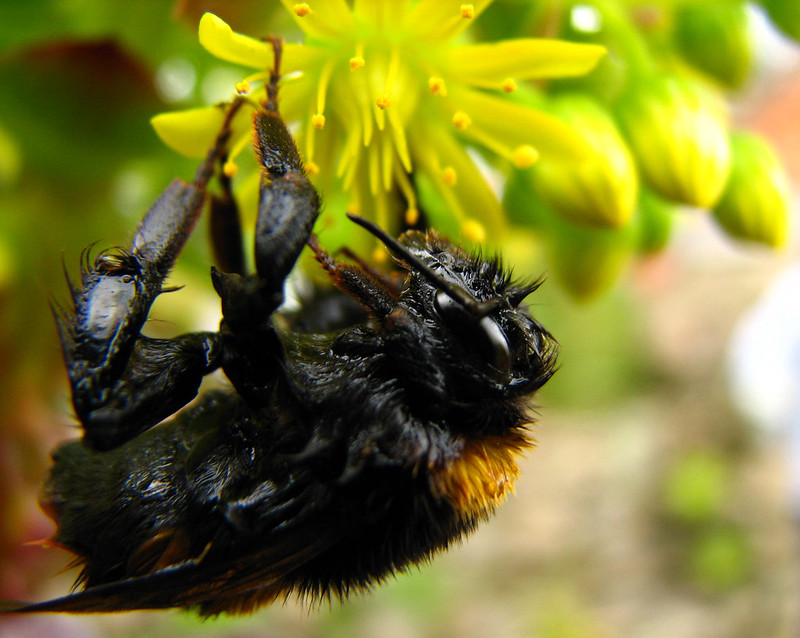Study shows that non-active, inert ingredients in Roundup brand herbicide have larger impact on bee deaths than glyphosate
The chemical glyphosate, commonly used in herbicide formulas for at-home and agricultural uses, has received a lot of attention for its negative consequences on human health and its impacts on mortality of beneficial biodiversity. A new study published in the Journal of Applied Ecology found that inactive ingredients like surfactants can be equally or more responsible for high mortality rates of bees that receive direct contact of the spray. The study found up to 96% mortality of bumblebees exposed to Roundup brand herbicide that did not contain glyphosate, showing that in this case, glyphosate was not the most harmful chemical in the Roundup formula. To tease out the effects of glyphosate versus inactive ingredients in the Roundup brand of herbicides, this study measured the mortality rates of bumblebees exposed to three herbicide products: 1) Roundup brand product designed for at-home residential use that lacked glyphosate as an ingredient, 2) Roundup brand product designed for agricultural use that included glyphosate as an active ingredient, and 3) Non-roundup brand product, Weedol, that included glyphosate. Water was used as a control treatment. The Roundup with glyphosate caused 30% mortality, while the Roundup without glyphosate caused 96% mortality, indicating that glyphosate was not the only or main cause of bee deaths. For further support of this conclusion, the Weedol product that also contained glyphosate did not cause significant mortality, with death rates the same for bees exposed to the water treatment.
 This study is the first to show that contact exposure to either consumer or agricultural Roundup products at label recommended concentrations can cause high levels of mortality in bumblebees and that the co-formulants like surfactants in these roundup products, not the active ingredient glyphosate, are driving mortality. Surfactants are commonly used in pesticide spray formulas to help spread active ingredients across target plant leaves to increase absorption and toxicity of the active ingredient like glyphosate in herbicides. These surfactants do not undergo the same level of rigorous testing for toxicity as active ingredients in pesticides. Therefore, less is known about their impacts on environmental health. This research shows the importance of re-examining the toxicity and adverse effects of non-active ingredients commonly used in pesticide sprays, as this research shows that co-formulants are indeed important ingredients to consider.
This study is the first to show that contact exposure to either consumer or agricultural Roundup products at label recommended concentrations can cause high levels of mortality in bumblebees and that the co-formulants like surfactants in these roundup products, not the active ingredient glyphosate, are driving mortality. Surfactants are commonly used in pesticide spray formulas to help spread active ingredients across target plant leaves to increase absorption and toxicity of the active ingredient like glyphosate in herbicides. These surfactants do not undergo the same level of rigorous testing for toxicity as active ingredients in pesticides. Therefore, less is known about their impacts on environmental health. This research shows the importance of re-examining the toxicity and adverse effects of non-active ingredients commonly used in pesticide sprays, as this research shows that co-formulants are indeed important ingredients to consider.
Banner Photo Credit: "The Mystery of the Dead Bees" by reader of the pack is licensed under CC BY-ND 2.0
Photo Credit: "Dead bee" by Roo Reynolds is licensed under CC BY-NC 2.0

